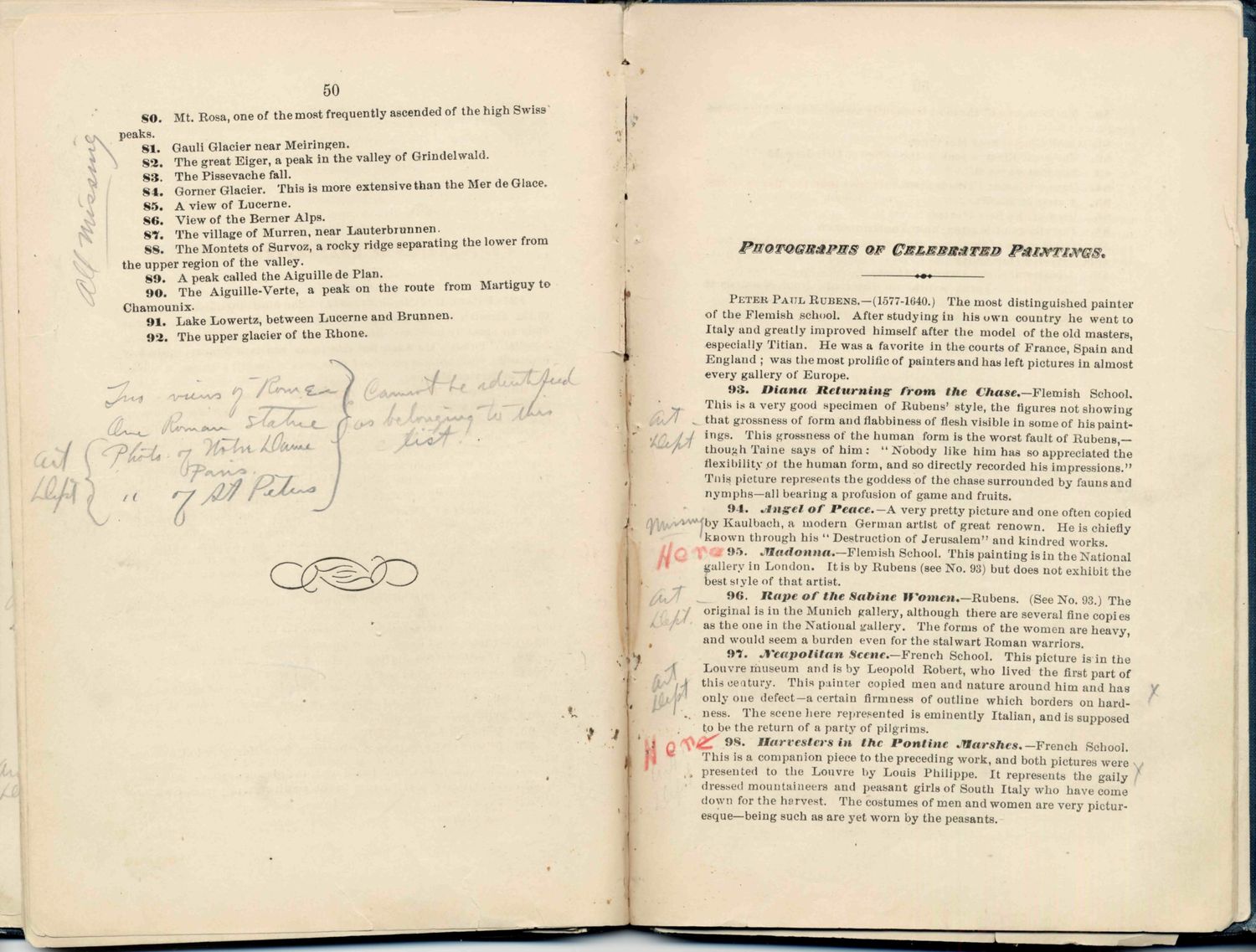| |
| |
Caption: Book - Gregory Art Collection Catalog (Gregory)
This is a reduced-resolution page image for fast online browsing.

EXTRACTED TEXT FROM PAGE:
50 so. Mt. Rosa, one of the most frequently ascended of the high Swiss peaks. 8 1 . Gauli Glacier near Meiringen. S 2 . The great Eiger, a peak in the valley of Grindelwald. 8 3 . The Pissevache fall. 8 4 . Gorner Glacier. This is more extensive than the Mer de Glace. 8 5 . A view of Lucerne. 8 6 . View of the Berner Alps. 87. The village of Murren, near Lauterbrunnen. 8 8 . The Montets of Survoz, a rocky ridge separating the lower from the upper region of the valley. 8 9 . A peak called the Aiguille de Plan. 9 0 . The Aiguille-Verte, a peak on the route from Martiguy to Chamounix. 9 1 . Lake Lowertz, between Lucerne and Brunnen. 9 2 . The upper glacier of the Rhone. PaQWQ@R£PB§ ®F €m&®BmTm& Pmttriiwg, P E T E K PAUL, RUBENS.—(1577-1640.) The most distinguished painter of the Flemish .school. After studying in his own country he went to Italy and greatly improved himself after the model of the old masters, especially Titian. He was a favorite in the courts of France, Spain and England ; was the most proliiie of painters and has left pictures in almost every gallery of Europe. 9 3 . IHuna Returningfrom the Chase.—Flemish School. This is a very good specimen of Rubeus' style, the figures not showing that grossness of form and flabbiness of flesh visible in some of his paintings. This grossness of the human form is the worst fault of Rubens,— though 'Paine says of him : "Nobody like him has so appreciated the flexibility ot the human form, and so directly recorded his impressions." Tnis picture represents the goddess of the chase surrounded by fauns and nymphs—all bearing a profusion of game and fruits. 9 4 . .luge! of Peace. —A very pretty picture and one often copied q\N*» v'fby Kaulbaeh, a modern German artist of great renown. He is chiefly 'known through his " Destruction of Jerusalem" and kindred works. * rj 9ft. Madonna*—Flemish School. This painting is in the National gallery in London, [t is by Rubeus (see No. 93) but does not exhibit the best style of that artist. 9 6 . Rape of the Sabine Women.—Rubens. (See No. 93.) The original is in the Munich gallery, although there are several fine copies as the one in the National gallery. The forms of the women are heavy, and would seem a burden even for the stalwart Roman warriors. 9 7 . JTcapoiitan Scene.—French School. This picture is in the Louvre museum and is by Leopold Robert, who lived the first part of this century. This painter copied meu and nature around him and has only one defect—a certain firmness of outline which borders on hardI .. ness. The scene here represented is eminently Italian, and is supposed to be the return of a party of pilgrims. Q 'CtitS 9 S . Harvesters in the Pontine .Varshes.— French School. This is a companion piece to the preceding work, and both pictures were , presented to the Louvre by Louis Philippe. It represents the gaily dressed mountaineers and peasant girls of South Italy who have come down for the harvest. The costumes of men and women are very picturesque—being such as are yet worn by the peasants. OJV^ G^D \ H I l ' •
| |